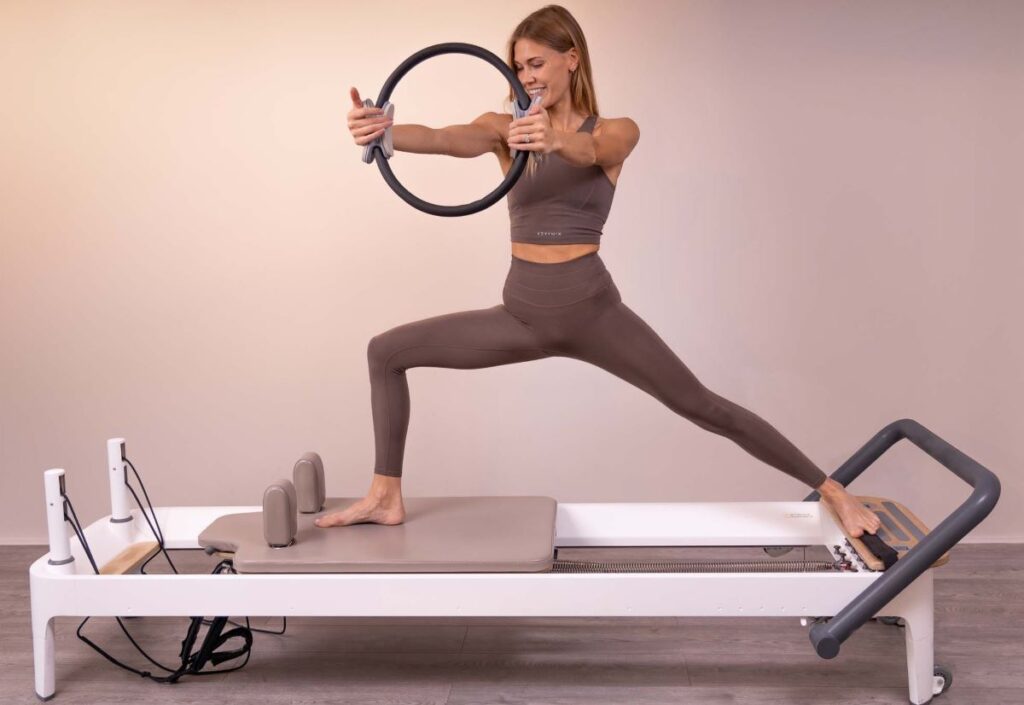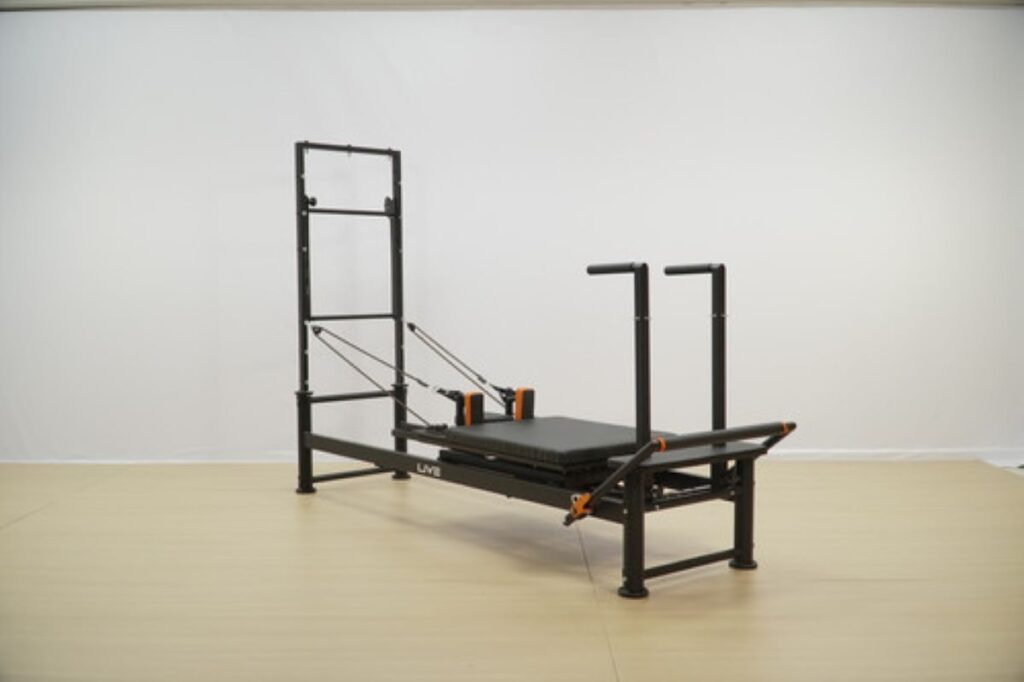Pilates has gained immense popularity in recent years, with many individuals seeking to improve their strength, flexibility, and overall well-being. Among the various equipment options available, Pilates reformers and Pilates beds are two of the most commonly used. While they may appear similar at first glance, they serve different purposes and offer distinct benefits. This article will explore the differences between Pilates reformers and Pilates beds, helping you determine which one is right for your fitness journey.
Understanding Pilates Equipment
Before diving into the specifics of reformers and beds, it is essential to understand the fundamental principles of Pilates. Developed by Joseph Pilates in the early 20th century, Pilates focuses on core strength, alignment, and controlled movements. The equipment used in Pilates enhances these principles, allowing for a more comprehensive workout experience. The method emphasises the mind-body connection, encouraging practitioners to engage their mental focus while performing physical exercises. This holistic approach not only improves physical fitness but also promotes mental clarity and emotional well-being.
What is a Pilates Reformer?
A Pilates reformer is a versatile piece of equipment designed to provide resistance and support during exercises. It consists of a sliding carriage, springs for adjustable resistance, and various attachments that allow for a wide range of movements. The reformer is particularly effective in targeting specific muscle groups while promoting proper alignment and form. With its unique design, the reformer can be used to perform exercises that challenge balance and coordination, making it an invaluable tool for enhancing overall body awareness.
Reformers can be used for a variety of exercises, from basic to advanced levels, making them suitable for individuals of all fitness backgrounds. The adjustable resistance allows users to tailor their workouts to their specific needs, whether they are rehabilitating an injury or seeking to enhance their athletic performance. Furthermore, the reformer’s ability to facilitate both strength training and flexibility work makes it a popular choice among fitness enthusiasts, as it caters to diverse fitness goals and preferences.
What is a Pilates Bed?
Often referred to as a “Cadillac,” a Pilates bed is a larger and more complex piece of equipment. It features a raised platform with a sliding carriage, similar to the reformer, but also includes vertical and horizontal bars, springs, and straps. The additional components of the Pilates bed allow for a broader range of exercises and variations. This equipment is particularly beneficial for those who wish to explore more dynamic movements, as it provides the necessary support and resistance to execute challenging routines safely.
While Pilates beds can be used for traditional Pilates exercises, they also enable practitioners to perform more advanced movements that require greater stability and strength. The versatility of the Pilates bed makes it an excellent choice for those looking to deepen their practice or explore new techniques. Additionally, the Cadillac’s unique design allows for exercises that can be performed in various positions, such as lying down, sitting, or standing, further enhancing the workout experience. This adaptability not only keeps sessions engaging but also encourages practitioners to push their boundaries and discover new aspects of their physical capabilities.
Key Differences Between Reformers and Beds
While both reformers and Pilates beds serve similar purposes, there are several key differences that set them apart. Understanding these distinctions can help you make an informed decision about which equipment is best suited to your needs.
Size and Space Requirements
One of the most significant differences between reformers and Pilates beds is their size. Reformers are generally more compact and easier to fit into smaller spaces, making them ideal for home use or studios with limited room. In contrast, Pilates beds are larger and require more space, often necessitating a dedicated area for practice.
If space is a concern, a reformer may be the more practical choice. However, for those with ample room and a desire for a more extensive range of exercises, a Pilates bed could be worth the investment.
Versatility and Exercise Variety
Both reformers and Pilates beds offer a range of exercises, but the Pilates bed’s additional features provide greater versatility. The various attachments and configurations of the bed allow for more complex movements and variations, making it suitable for advanced practitioners.
For beginners or those looking for a more straightforward approach, a reformer may be sufficient. However, as one progresses in their Pilates journey, the added versatility of a Pilates bed can enhance the overall experience and provide new challenges.

Cost Considerations
When it comes to cost, there is a notable difference between reformers and Pilates beds. Reformers tend to be more affordable, making them accessible for individuals looking to invest in their home workout equipment. On the other hand, Pilates beds are generally more expensive due to their size and complexity.
While the initial investment in a Pilates bed may be higher, it is essential to consider the long-term benefits and potential for growth in your practice. If budget constraints are a significant factor, a reformer may be the more viable option.
Benefits of Pilates Reformers
Pilates reformers offer numerous benefits that make them a popular choice among practitioners. Understanding these advantages can help you appreciate the value of this equipment in your fitness routine.
Enhanced Core Strength
One of the primary benefits of using a Pilates reformer is the focus on core strength. The reformer’s design encourages users to engage their core muscles throughout various exercises, promoting stability and control. This emphasis on core strength can lead to improved posture, reduced back pain, and enhanced athletic performance.
Customisable Resistance
The adjustable springs on a reformer allow users to customise their resistance levels, catering to individual fitness levels and goals. This feature makes the reformer suitable for everyone, from beginners to advanced practitioners. By adjusting the resistance, users can gradually increase the intensity of their workouts, ensuring continued progress and development.
Support for Rehabilitation
Reformers are often utilised in rehabilitation settings due to their ability to provide support and assistance during exercises. The controlled movements and adjustable resistance make it easier for individuals recovering from injuries to engage in safe and effective workouts. Many physiotherapists incorporate reformers into their treatment plans, highlighting their therapeutic benefits.
Benefits of Pilates Beds
While reformers have their advantages, Pilates beds also offer unique benefits that can enhance a practitioner’s experience. Exploring these benefits can help individuals determine if a Pilates bed is the right choice for their fitness journey.
Advanced Movement Capabilities
The versatility of Pilates beds allows for a broader range of exercises, including advanced movements that may not be possible on a reformer. The additional attachments and configurations enable practitioners to explore new techniques and challenge their bodies in different ways.
Full-Body Engagement
Pilates beds encourage full-body engagement during workouts, as many exercises require the use of multiple muscle groups simultaneously. This holistic approach can lead to improved overall strength and coordination, making it an excellent option for those seeking a comprehensive workout experience.
Enhanced Stability and Balance
The larger platform of a Pilates bed provides a stable base for exercises, allowing practitioners to focus on balance and control. This stability can be particularly beneficial for individuals working on their proprioception or those looking to improve their overall body awareness.
Choosing the Right Option for You
Deciding between a Pilates reformer and a Pilates bed ultimately depends on individual preferences, goals, and circumstances. Consider the following factors when making your choice:
Fitness Goals
Reflect on your fitness goals and what you hope to achieve through your Pilates practice. If your primary focus is on building core strength and improving flexibility, a reformer may be sufficient. However, if you are looking to explore advanced movements and challenge yourself further, a Pilates bed could be the better option.

Space and Budget
Assess your available space and budget for Pilates equipment. If you have limited room or are working with a tighter budget, a reformer may be the more practical choice. Conversely, if you have ample space and are willing to invest in a more versatile piece of equipment, a Pilates bed could be worth considering.
Experience Level
Your experience level in Pilates can also influence your decision. Beginners may find a reformer more accessible, while advanced practitioners may benefit from the added complexity of a Pilates bed. Consider your current skill level and how you envision your practice evolving over time.
Conclusion
Both Pilates reformers and Pilates beds offer unique benefits that can enhance your fitness journey. Understanding the differences between the two can help you make an informed decision based on your individual needs and goals. Whether you choose a reformer for its compact design and core-focused workouts or a Pilates bed for its versatility and advanced capabilities, both options can contribute to a healthier, stronger you.
Ultimately, the best equipment is the one that aligns with your fitness aspirations and fits seamlessly into your lifestyle. Whichever path you choose, embracing the principles of Pilates will undoubtedly lead to a more balanced and fulfilling approach to health and wellness.
Related : Best Pilates Rings Australia: Which One Should You Buy?

